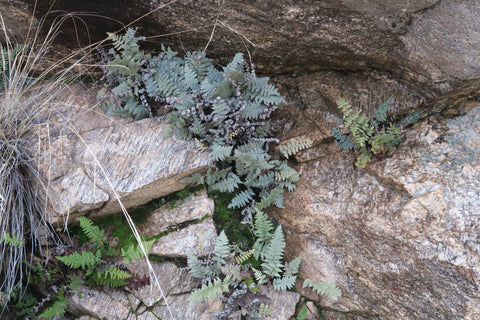An imaginary tour of nesting boxes for the plant kingdom December 13 2019, 0 Comments
The nesting boxes for the plant kingdom are a classic Montessori material. (They are usually called Chinese boxes, but I don’t like to use that term. They certainly didn’t come from China.) Like many other materials that were created many years ago, this one needs a make-over or at least a reality check to see if it reflects what children will see in their later studies.
Paraphrasing a Chinese proverb, if your nesting/Chinese boxes are based on a two-kingdom classification, and they contain the bacteria and fungi, the best time to change them was before 1980. The second best time is now.
The point of elementary studies isn’t to teach children names and ideas that they are not likely to see again. Maria Montessori said that children who complete her elementary program would have acquired knowledge equal to a high school student of her day. She wasn’t trying to create a separate set of biology terms; she was giving children the mainstream academic knowledge of her day. Continuing to use the terminology and concepts of the traditional lessons without checking to see current academic view leads to problems. Children may have to discard their Montessori lessons and go back to the beginning to learn contemporary biology. “Unlearning” is very hard for people. They tend to cling to the first way they learned something, and they must accept that their version is wrong before they can accept another view.
If there were nesting boxes that reflect the current academic view of the plant kingdom, how would they look? Here are my ideas.
Picture a large, green box that is labeled “Plant Kingdom.” It could have other labels as well as that main one. Possibilities are the more formal Latin Kingdom Plantae, or the more descriptive one, Embryophytes. The latter is the informal scientific name for land plants.
We take the lid off this box and find a small box labeled “Bryophytes, the nonvascular plants” and a much larger one labeled “Tracheophytes, the vascular plants.” Inside the bryophyte box, there are three smaller boxes labeled “hornworts”, “liverworts”, and “mosses.” Should there be a label for the division/phylum of these boxes? There doesn’t have to be. I have an advanced botany textbook that doesn’t use a Linnaean rank name for these branches of plant life. If you want to add the division/phylum names, see Wikipedia. It is generally quite good for plant classification.
The larger Tracheophyte box contains two boxes, a small one labeled “lycophytes” and a much larger one labeled “euphyllophytes, the true-leaf plants.” The lycophyte box has three small boxes inside, the club mosses, spike mosses, and quillworts. Alternatively, the lycophyte box could list these three lineages on the lid and not separate them. They are best described as orders of the lycophytes.
The euphyllophyte box has two boxes inside, a smaller one labeled “fern clade, the monilophytes” and a larger one labeled “Spermatophytes, the seed plants.” The fern clade box has several smaller boxes. They are labeled: “ophioglossids – whiskferns, alder’s tongue ferns, and grape ferns”; “equisetums – the horsetails and scouring rushes”; and “leptosporangiate ferns or polypod ferns – the true ferns.” If your school is in a tropical climate, you may need to add a fourth box for the marattid ferns. They are huge plants that grow only in the tropics.
The spermatophyte box holds two boxes, the angiosperms or flowering plants, and the gymnosperms, the naked seed plants. The gymnosperm box holds four boxes – the cycads, the ginkgo, the conifers, and the gnetophytes. It is uncertain at present whether the gnetophytes belong in their own separate box or within another of the seed plant boxes. It is clear that they do not belong in the angiosperm box, however.
The angiosperms or flowering plants must have a big box. They make up about 90% of the plant kingdom. There are several boxes inside their box. A couple of very small boxes hold the first branches – the water lilies and the anise tree. Then there is a small box labeled “magnoliids,” a medium box labeled “monocots,” and a large box labeled “eudicots.” Three-quarters of the flowering plants are eudicots; about 22% are monocots.
All this can be imagined, but it will take quite some creativity to make physical containers that can actually hold an image and information about each of these branches of the plant kingdom. The information should include the lineages of the plant. For example: Sunflower lineages – embryophytes, tracheophytes, euphyllophytes, spermatophytes, angiosperms, eudicots. The text should also give some of the defining features – the derived traits – of each group.
If you need the illustrations or more information, see https://big-picture-science.myshopify.com/collections/montessori-botany-materials/products/the-plant-kingdom. This is a pdf of a PowerPoint for teacher education. You can print the images for use in your classroom. It has all the images you need except quillworts. Those lycophytes are rare, and the main reason to include them is that they are the closest relatives to the ancient Lepidodendron trees.
Please let me know if you need help or have questions on plant kingdom nesting boxes. If you want to have another set for the flowering plants, that’s a more involved story. It would be fun to do, however.
Happy plant explorations,
Priscilla







